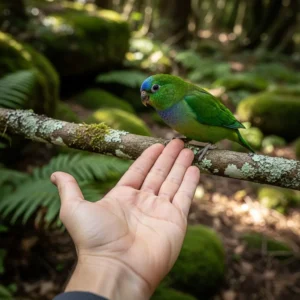
Redefining “Smart”: Understanding Other Independent and Stubborn Dog Breeds
The Basset Hound is far from the only breed whose specialized intelligence is often mislabeled as a flaw. Many of the dogs on the “least trainable” lists are, in fact, highly intelligent specialists who were bred for independence, not for constant collaboration with a human handler.
Scent Hounds: The Independent Investigators
Like the Basset, other scent hounds such as the Beagle, Bloodhound, and Dachshund were bred to follow a scent trail over long distances, often far ahead of their human partners. They needed to be self-reliant and make their own decisions about which way the trail led. A Beagle that slips its collar and follows its nose for a mile isn’t being naughty; it’s doing precisely what centuries of selective breeding have programmed it to do. Their intelligence lies in their incredible persistence and their ability to interpret a complex world of scent that is invisible to us.
Sighthounds: The Swift and Silent Hunters
Breeds like the Afghan Hound, Greyhound, Borzoi, and Saluki were bred to hunt by sight. They were designed to spot prey from a great distance and pursue it with explosive speed. This requires keen vision, incredible athleticism, and the ability to make split-second decisions independently. The “aloof” or “cat-like” demeanor often attributed to breeds like the Afghan Hound is a feature of their breeding, not a bug. They were not meant to be constantly looking to a human for direction. Their intelligence is in their sharp environmental awareness and their self-sufficient nature. Asking an Afghan Hound for rapid-fire obedience is like asking a sprinter to be a chess champion—they are different types of athletes.
Livestock Guardian Breeds: The Self-Appointed Managers
Breeds like the Great Pyrenees, Anatolian Shepherd, and Kuvasz were developed to live with and protect flocks of livestock from predators, often with minimal human supervision for days or weeks at a time. This job requires an incredibly high level of intelligence. They must be able to distinguish between a genuine threat and a harmless passerby, show restraint, and act decisively when necessary. They are problem-solvers by nature. This is why they can be challenging in a pet home; they will assess a situation and make their own judgment call, which may not align with their owner’s command. They don’t just obey; they evaluate. This is a sophisticated form of intelligence that is often misinterpreted as stubbornness.
Bulldogs and Terriers: The Tenacious Specialists
The English Bulldog’s ancestors were bred for the cruel sport of bull-baiting, a task requiring immense tenacity and a high pain threshold, not intricate communication with a handler. While their modern temperament is far more placid, that underlying grit remains. Furthermore, their physical structure, particularly being a brachycephalic (short-skulled) breed, can impact their stamina for training. Difficulty breathing can make long sessions challenging. Similarly, many terriers were bred to hunt vermin independently in barns or underground. This required a bold, persistent, and self-reliant nature. They are clever and quick to learn, but their motivation is often internal, not based on a desire to please their owner.















